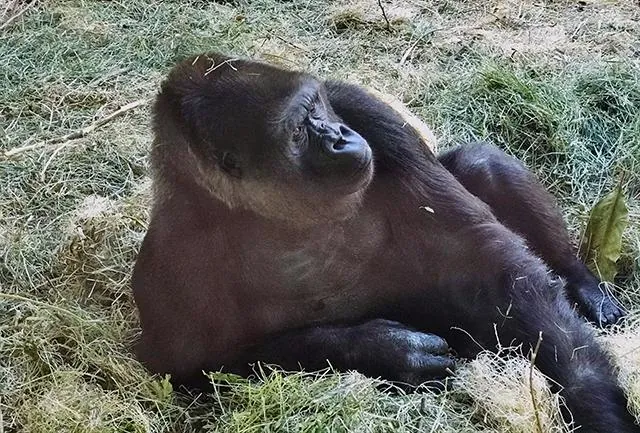
Groundbreaking Ape Genome Sequencing Unlocks Evolutionary Secrets!
2025-04-09
Author: Rajesh
A Major Milestone in Genome Science
In a revolutionary leap for genetic research, scientists have successfully sequenced six ape genomes completely, including the siamang, Sumatran orangutan, Bornean orangutan, gorilla, bonobo, and chimpanzee. This latest achievement has untangled previously inaccessible segments of their DNA, offering fresh perspectives on evolutionary history.
Insights That Change the Game
The new ape genome references, detailed in the April 9 edition of *Nature*, are already proving invaluable for comparative studies that illuminate the shared and unique evolutionary paths of humans and our ape relatives. Senior researcher Evan E. Eichler emphasized the significance, stating, "These genomes will allow us to reconstruct the evolutionary history of every base pair in our genome."
An Epic Collaboratory Effort
Over 120 scientists from more than 40 research labs across the globe collaborated for years to construct, analyze, and ensure the quality of these genomes, achieving over 99% resolution in their assemblies. The sequenced genomes now rival the accuracy of human genome references, dispelling previous biases.
Revealing the Genetic Puzzle
This rich trove of genetic information is paving the way for groundbreaking comparisons. For instance, researchers have uncovered significant genetic distinctions associated with immune function, longevity, and brain development, potentially influencing future biomedical advancements in aging and neuropsychiatry.
Connecting the Dots to Human Evolution
It is established that humans and chimps diverged roughly 5.5 to 6.3 million years ago, with the two species sharing about 99% of their DNA. However, these findings highlight nuanced differences that may explain the distinct characteristics of each species. Moreover, the research delves into how African apes branched off from their common ancestors about 10.6 to 10.9 million years ago and how orangutans separated from the lineage approximately 18.2 to 19.6 million years ago.
The Discovery of Key Genetic Regions
The project has also illuminated rapidly evolving regions in primate genomes, often linked to emerging genes significant to each species. For instance, the major histocompatibility complex, crucial for immune system functions, shows vast variations among mammals, which could shed light on unique human diseases.
Uncovering the Mysteries of Centromeres
In a first-of-its-kind insight, researchers analyzed the genetic sequence and structure of centromeres—key regions in DNA responsible for cell division. Notably, while bonobos have smaller centromeres than those found in chimps, both function effectively.
What Lies Ahead for Ape Genomes?
Though this monumental project has nearly reached completion, scientists aim to fill in the remaining gaps and continue sequencing additional primate species. They’re also keen on addressing gene biases in annotations that could overshadow lesser-known genes.
A Glimpse into the Future
With this seminal work, researchers are now on the brink of redefining what makes apes and humans distinct, including the identification of unique protein-coding genes linked to traits that set us apart. This groundbreaking ape genome resource may ultimately guide our understanding of human genetic disorders and the evolution of species.



 Brasil (PT)
Brasil (PT)
 Canada (EN)
Canada (EN)
 Chile (ES)
Chile (ES)
 Česko (CS)
Česko (CS)
 대한민국 (KO)
대한민국 (KO)
 España (ES)
España (ES)
 France (FR)
France (FR)
 Hong Kong (EN)
Hong Kong (EN)
 Italia (IT)
Italia (IT)
 日本 (JA)
日本 (JA)
 Magyarország (HU)
Magyarország (HU)
 Norge (NO)
Norge (NO)
 Polska (PL)
Polska (PL)
 Schweiz (DE)
Schweiz (DE)
 Singapore (EN)
Singapore (EN)
 Sverige (SV)
Sverige (SV)
 Suomi (FI)
Suomi (FI)
 Türkiye (TR)
Türkiye (TR)
 الإمارات العربية المتحدة (AR)
الإمارات العربية المتحدة (AR)